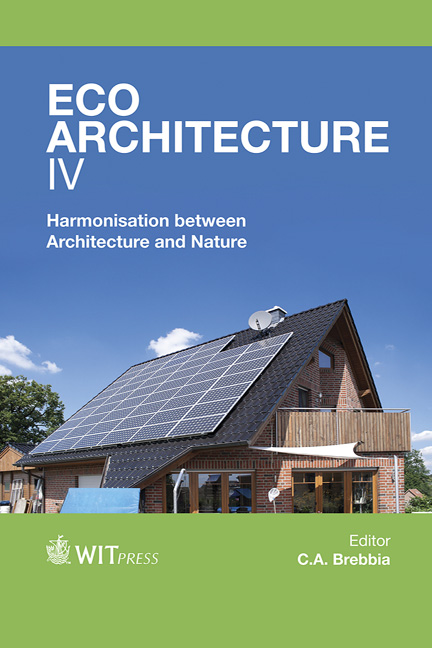Effect Of Skylight Configuration And Sky Type On The Daylight Impression Of A Room
Price
Free (open access)
Transaction
Volume
165
Pages
9
Page Range
53 - 61
Published
2013
Size
1,001 kb
Paper DOI
10.2495/ARC120051
Copyright
WIT Press
Author(s)
P. Seuntiens, M. van Boven & D. Sekulovski
Abstract
Today, daylight is considered to be the ultimate light source for performance lighting, ambiance creation, and healing environments. More and more architects design interior spaces using daylight not only to provide us with lighting to be able to see, but to connect us with the outside world and create beautiful daylight patterns inside. The light distribution in an interior space resulting from daylight is strongly connected with the architecture of the daylight opening and the sky type. Being able to understand the perceptual relation between architectural choices and the attractive qualities of daylight provides valuable insights for maximizing the daylight impression of a room. In a visual perception experiment, we measured the effect of skylight configuration and sky type on the daylight impression in a room. This was done based on renderings of a room. A room with different skylight configurations (5x) was built in Sketch-up, and Indigo renderer was used to render the lighting effects in the room using HDR sky images (overcast, partly clouded with/without visible sun, clear sky). In a paired comparison set-up (70 comparisons), the participants had to indicate which picture (left or right) had the strongest daylight impression. The comparisons were shown to the participants in a randomized order. After the experiment, participants had to fill out a short questionnaire. The statistical analysis showed a significant main effect of skylight configuration and sky type. In general, people preferred the larger rectangular skylights over the squared skylights in terms of daylight impression. The clear sky and partly clouded (sun visible) sky types resulted in a better daylight impression than the partly clouded (sun not visible). The daylight impression of an overcast sky was very low in general. The results of the questionnaire afterwards showed that the decision on daylight impression was mainly determined by 1) skylights (layout and view) and 2) daylight patterns (edge
Keywords
daylight impression, skylight configuration, sky type, perception





